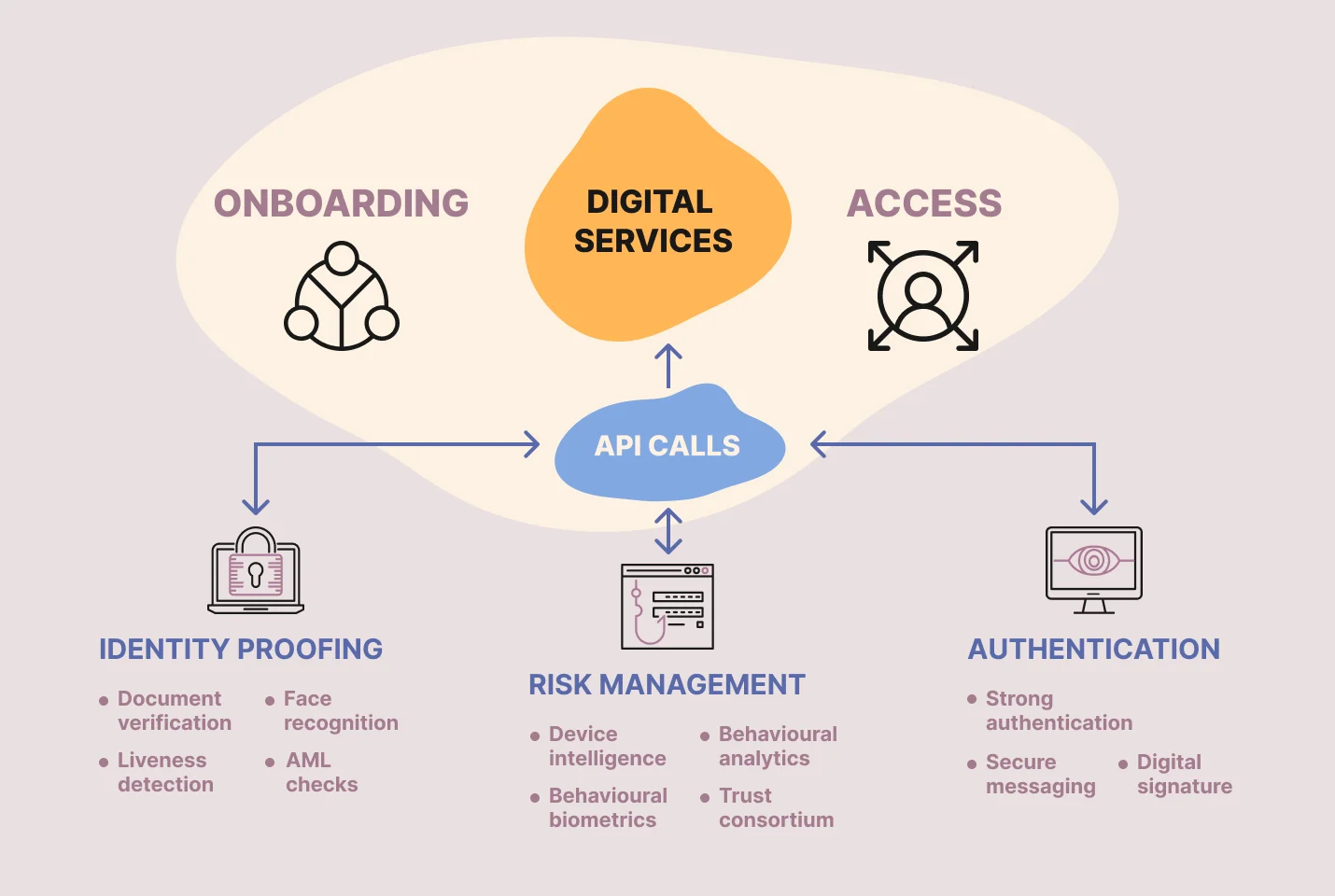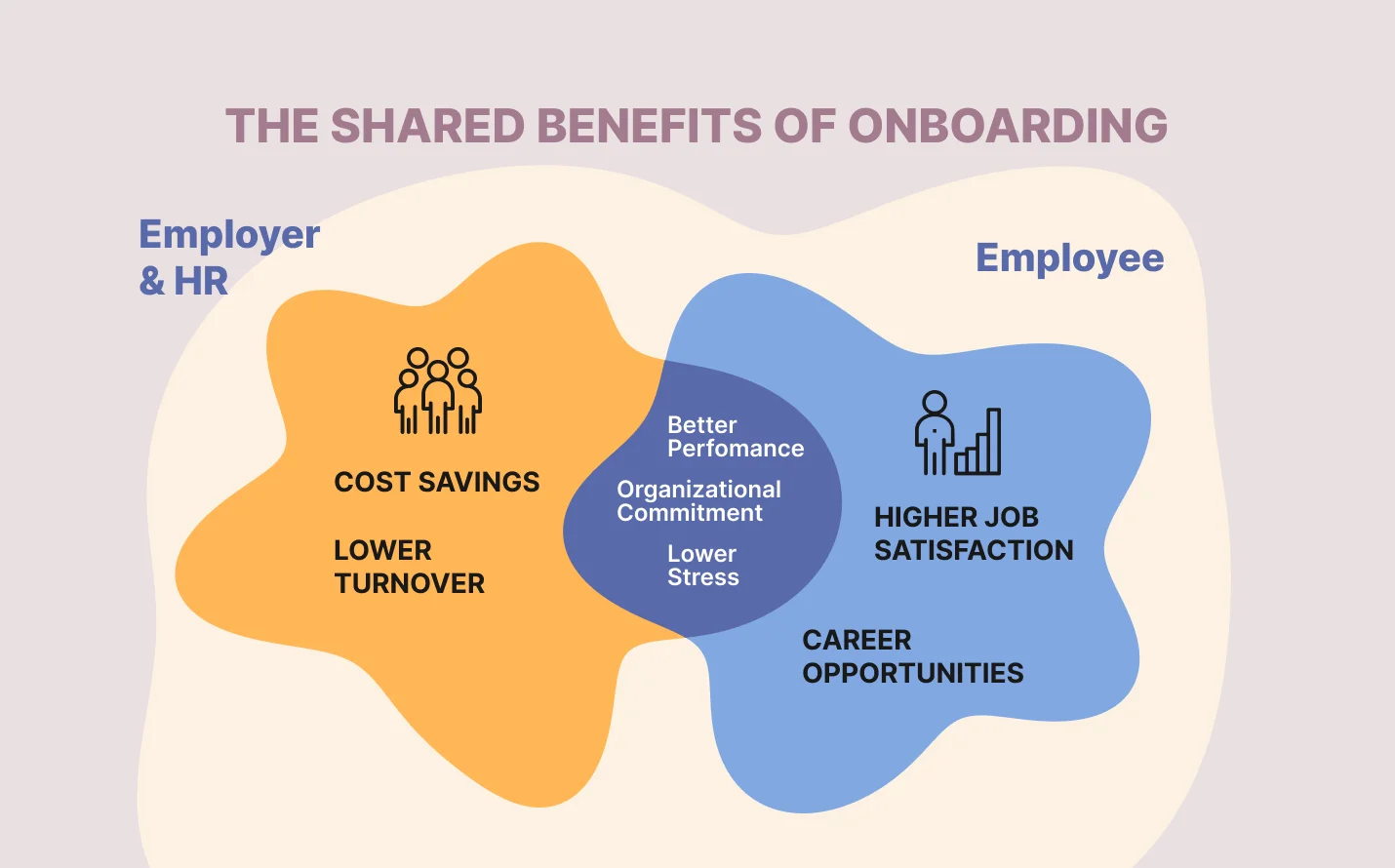Top 9 Onboarding Best Practices
It’s surprising to see that 36% of companies still haven’t set up a clear onboarding process. That’s right — over a third of businesses are passing up a significant opportunity to lay the framework for long-term employee success. Nevertheless, only 12% of employees believe their company does a good job onboarding new staff.
Furthermore, given the importance of onboarding to long-term retention and the overall health of your staff, prioritizing best practices implementation in onboarding in your program is nothing short of critical. We’ll discuss these practices in this detailed guide, answering significant concerns and providing invaluable insights to guarantee your onboarding process is structured and highly productive.
1. Engage and Preboard New Hires
Engage New Hires with Preboarding First
Preboarding isn’t just a formality; it’s an opportunity to make new hires feel valued and excited about their upcoming journey with your organization. In addition to the welcome message, consider sharing a brief video or virtual tour of your workplace, introducing them to their future colleagues and workspace. This multimedia approach can create a deeper connection and help them envision themselves as part of the team even before their first day.
Every new hire is unique, and their preboarding experience should reflect that. Tailor your preboarding communication to align with their specific role, department, or location. Personalization can go a long way in demonstrating your organization’s commitment to individual growth and development, reinforcing the idea that each employee is an essential part of your collective success.
Preboarding is a two-way street. Invite new hires to engage with your organization even before they officially join. Consider setting up an online portal or community where they can connect with future colleagues, access helpful resources, or participate in discussions about their role. By fostering this early engagement, you reduce anxiety and lay the foundation for a culture of collaboration and open communication.
Preboard New Hires
With preboarding being much more than paperwork, it’s crucial to recognize the impact of an efficient administrative process. In addition to providing access to documents, consider offering detailed instructions or FAQs to help new hires navigate the paperwork smoothly. The less daunting this process feels, the more confident and prepared they will be on their first day.
Preboarding often involves multiple departments, including HR and IT. Collaborate closely with these teams to ensure a seamless experience. For instance, ensure that IT equipment and access are set up well in advance so new hires can hit the ground running without technical issues. This level of coordination minimizes frustration and demonstrates your organization’s commitment to a well-organized and efficient onboarding process.
Preboarding doesn’t have to be limited to administrative tasks. Consider providing new hires access to introductory training materials, company culture guides, or recommended reading to help them acclimate to your organization’s values and expectations. This proactive approach to learning sets the stage for a continuous development and growth culture, reinforcing that learning is a cornerstone of your workplace.
2. Paperwork and Administrative Tasks
Get the Paperwork Done ASAP
Efficiently handle all paperwork and administrative tasks as early as possible to avoid any unnecessary delays or stress for your new hires. This proactive approach demonstrates your commitment to their seamless integration into the organization. Tax forms, employment contracts, or any other essential documents, having everything in order from the outset instills confidence in your new employees. It allows them to focus on their roles from day one. Leveraging a digital onboarding system streamlines the process and reduces the risk of errors, making it a valuable tool for creating a hassle-free and efficient onboarding experience.
3. Introduce Company Values and Culture
Introduce and Demonstrate Company Values as Early as Possible
Your organization’s culture is built on its ideals. Share these concepts with new hires from the beginning and demonstrate how you apply them in daily operations. It helps employees understand and support the company’s objective and vision. Urge new hires to connect actively with these principles by giving tales or examples of how the values have benefited the firm and its employees, generating a compelling story that resonates with them.
Stay True to Your Culture
Consistency is vital when it comes to company culture. Ensure that your activities, rules, and choices are compatible with your stated principles. Authenticity builds trust and a sense of belonging among new employees. Consider recognizing and honoring individuals who reflect these ideals in their daily work to perpetuate the culture. It acknowledges their efforts and serves as a tangible reminder of the company’s commitment to its core values.
Share Your Definition of Success
Clearly define what success looks like in your organization. It helps new employees in understanding their goals and expectations, allowing them to succeed from the outset. Beyond defining success, offer direction on how to reach it, whether through job advancement, skill development, or meeting specified performance benchmarks. You drive new hires to strive for excellence and contribute meaningfully to your company’s goals by aligning individual achievement with organizational success.
4. Provide Orientation and Resources
Give Out a Welcome Package
Provide new hires with a welcome package that includes company swag, an employee handbook, and any other materials to help them feel prepared and part of the team. This package can also have a personalized welcome letter from the CEO or a senior leader expressing excitement about the new employee’s arrival. Such personalized touches go a long way in making new hires feel valued and appreciated.
Make the First Day Exciting
The first day on the job should be memorable. Plan an engaging orientation program that introduces new hires to their team, workplace, and essential facilities. Consider arranging a welcome breakfast or lunch with team members, providing an opportunity for casual introductions and camaraderie.
Avoid Overloading New Employees with Information
While it’s necessary to provide information, avoid overwhelming new hires with an information overload. Focus on what’s the most essential and allow them to absorb the rest gradually. Remember that the onboarding process is a journey, not a race. Encourage questions and create an environment where new hires feel comfortable seeking clarification or additional information as needed.
5. Foster Team Integration
Involve Team Members in the Process
Motivate team members to take an active role in onboarding. It could include things like introductions, team lunches, or social gatherings. Participation in a team fosters a sense of belonging and speeds up integration. It eases the transition and develops a friendly and collaborative work environment when existing team members take the initiative to welcome and engage new personnel.
Assign a Buddy
Assign a seasoned employee as a “buddy” or mentor to guide and support the new hire during their initial days. This mentorship helps newcomers feel more comfortable and helps them learn the ropes faster. It’s not just about getting acclimated to processes and procedures; having a buddy provides a trusted confidant who can offer guidance, answer questions, and share valuable insights about the company culture.
Provide Opportunities to Connect with Other Teammates
Facilitate opportunities for new hires to connect with their colleagues. It can include team-building activities, group projects, or even casual coffee breaks. Building relationships with peers is a vital aspect of onboarding, as it helps new employees feel socially integrated and makes a network of support beyond their immediate team.
Incorporate Job Shadowing
Allow new employees to shadow experienced colleagues to gain insights into their roles and responsibilities. Job shadowing helps bridge the gap between theory and practice. By observing real-life scenarios and best practices, new hires can better understand their job expectations and how their role fits into the broader organizational context. It’s a hands-on approach that accelerates the learning process and boosts confidence.
6. Learning Opportunities
Let Employees Learn in the Flow of Work
Foster a learning mindset by providing opportunities for ongoing education. Workshops, online courses, and access to a learning management system are all possibilities. Include learning in day-to-day activities. A learning culture where employees can learn new skills and knowledge while at work improves their professional development and adds to a more innovative and adaptable workforce.
Introduce Work Gradually
Avoid overwhelming new hires with a heavy workload at the outset. Gradually increase their responsibilities as they become more comfortable and confident in their roles. This approach prevents burnout and allows new employees to build their skills and expertise step by step. It’s a strategy that promotes long-term success and confirms it can contribute effectively to your organization’s goals over time.
7. Check-ins and Feedback
Check In Regularly
These can be daily, weekly, or monthly, according to the needs of the individual. Use these check-ins to answer inquiries, provide feedback, and provide assistance. Consistent communication makes new employees feel appreciated and ensures that any issues or challenges are handled as soon as possible, preventing them from escalating.
Conduct Frequent Check-ins with New Hires
Frequent check-ins aid in the early detection of problems and reflect your dedication to their achievement. Facilitate accessible communication during these meetings, creating a secure area for recruits to express themselves, seek clarification, or share their progress. These contacts can also contribute to a sense of belonging and the development of solid workplace connections.
Collect Feedback from New Hires
Comments are an important tool for optimizing the onboarding experience. Request feedback from new hires on how to improve the experience. You empower them to contribute to enhancing your onboarding program by actively seeking their thoughts. Moreover, this practice supports a culture of continual development and demonstrates your commitment to providing a great employee experience.
8. Involvement of Leadership
Involve Senior Leaders
Leadership involvement is crucial for setting the tone and reinforcing company values. Have senior leaders engage with new employees through welcome messages, meetings, or mentorship programs. Their presence and active participation send a powerful message about the organization’s commitment to the success and well-being of every employee. Additionally, senior leaders can share their insights, experiences, and strategic vision, helping new hires understand their role in contributing to the company’s long-term objectives. This connection between leadership and newcomers fosters a sense of alignment and inspires a shared commitment to the organization’s mission.
9. Flexibility and Adaptation
Be Flexible
Every new hire is unique, so be prepared to adapt your onboarding process as needed. Tailor the experience to accommodate individual preferences and learning styles. Flexibility also means being open to feedback from new employees and adjusting the onboarding journey based on their insights. This dynamic approach enhances the onboarding experience and showcases your organization’s commitment to valuing and embracing diversity.
Revisit Your Onboarding Process
Regularly review and update your onboarding process to ensure it remains effective and aligns with your evolving company culture and goals. Consider conducting surveys or focus groups with recent hires to gather their input on what worked well and what could be improved. You demonstrate a commitment to continuous improvement and a culture of excellence by keeping your onboarding process updated and responsive to changing demands.
Conclusion
Effective onboarding is vital to the employee lifecycle, influencing retention, productivity, and overall job satisfaction. By engaging new hires early, sharing company values, providing the right resources, fostering team integration, and maintaining flexibility, you can create an onboarding experience that sets your employees up for success from day one.
References:
- https://www.linkedin.com/pulse/well-defined-onboarding-induction-process-your/
- https://www.upwork.com/resources/employee-onboarding-best-practices
- https://www.forbes.com/advisor/business/onboarding-best-practices/
- https://www.business.com/articles/onboarding-best-practices/
- https://www.recruiter.com/recruiting/5-innovative-pre-boarding-strategies-to-keep-new-hires-engaged-before-their-first-day/
- https://www.shrm.org/resourcesandtools/hr-topics/talent-acquisition/pages/new-employee-onboarding-guide.aspx
- https://hbr.org/2023/07/a-guide-to-onboarding-new-hires-for-first-time-managers
FAQ
How does effective onboarding improve employee retention?
What role does technology play in modern onboarding?
How can onboarding impact long-term company success?
What are the key elements of a successful onboarding program?
What common mistakes should be avoided in onboarding?
How long should onboarding last?
What information should the new employee receive during onboarding?
-
302 25/Oct/2023
-
125 26/Jul/2023
-
133 21/Jun/2023
- Top 9 Onboarding Best PracticesIt's surprising to see that 36% of companies still haven't set up a clear onboarding process. That's right — over a third of businesses are passing up a significant opportunity to lay the framework for long-term employee success. Nevertheless, only 12% of employees believe their company does a good job onboarding new staff.Furthermore, given the importance of onboarding to long-term retention and the overall health of your staff, prioritizing best practices implementation in onboarding in your program is nothing short of critical. We'll discuss these practices in this detailed guide, answering significant concerns and providing invaluable insights to guarantee your onboarding process is structured and highly productive.1. Engage and Preboard New HiresEngage New Hires with Preboarding FirstPreboarding isn't just a formality; it's an opportunity to make new hires feel valued and excited about their upcoming journey with your organization. In addition to the welcome message, consider sharing a brief video or virtual tour of your workplace, introducing them to their future colleagues and workspace. This multimedia approach can create a deeper connection and help them envision themselves as part of the team even before their first day.Every new hire is unique, and their preboarding experience should reflect that. Tailor your preboarding communication to align with their specific role, department, or location. Personalization can go a long way in demonstrating your organization's commitment to individual growth and development, reinforcing the idea that each employee is an essential part of your collective success.Preboarding is a two-way street. Invite new hires to engage with your organization even before they officially join. Consider setting up an online portal or community where they can connect with future colleagues, access helpful resources, or participate in discussions about their role. By fostering this early engagement, you reduce anxiety and lay the foundation for a culture of collaboration and open communication.Preboard New HiresWith preboarding being much more than paperwork, it's crucial to recognize the impact of an efficient administrative process. In addition to providing access to documents, consider offering detailed instructions or FAQs to help new hires navigate the paperwork smoothly. The less daunting this process feels, the more confident and prepared they will be on their first day.Preboarding often involves multiple departments, including HR and IT. Collaborate closely with these teams to ensure a seamless experience. For instance, ensure that IT equipment and access are set up well in advance so new hires can hit the ground running without technical issues. This level of coordination minimizes frustration and demonstrates your organization's commitment to a well-organized and efficient onboarding process.Preboarding doesn't have to be limited to administrative tasks. Consider providing new hires access to introductory training materials, company culture guides, or recommended reading to help them acclimate to your organization's values and expectations. This proactive approach to learning sets the stage for a continuous development and growth culture, reinforcing that learning is a cornerstone of your workplace.2. Paperwork and Administrative TasksGet the Paperwork Done ASAPEfficiently handle all paperwork and administrative tasks as early as possible to avoid any unnecessary delays or stress for your new hires. This proactive approach demonstrates your commitment to their seamless integration into the organization. Tax forms, employment contracts, or any other essential documents, having everything in order from the outset instills confidence in your new employees. It allows them to focus on their roles from day one. Leveraging a digital onboarding system streamlines the process and reduces the risk of errors, making it a valuable tool for creating a hassle-free and efficient onboarding experience.3. Introduce Company Values and CultureIntroduce and Demonstrate Company Values as Early as PossibleYour organization's culture is built on its ideals. Share these concepts with new hires from the beginning and demonstrate how you apply them in daily operations. It helps employees understand and support the company's objective and vision. Urge new hires to connect actively with these principles by giving tales or examples of how the values have benefited the firm and its employees, generating a compelling story that resonates with them.Stay True to Your CultureConsistency is vital when it comes to company culture. Ensure that your activities, rules, and choices are compatible with your stated principles. Authenticity builds trust and a sense of belonging among new employees. Consider recognizing and honoring individuals who reflect these ideals in their daily work to perpetuate the culture. It acknowledges their efforts and serves as a tangible reminder of the company's commitment to its core values.Share Your Definition of SuccessClearly define what success looks like in your organization. It helps new employees in understanding their goals and expectations, allowing them to succeed from the outset. Beyond defining success, offer direction on how to reach it, whether through job advancement, skill development, or meeting specified performance benchmarks. You drive new hires to strive for excellence and contribute meaningfully to your company's goals by aligning individual achievement with organizational success.4. Provide Orientation and ResourcesGive Out a Welcome PackageProvide new hires with a welcome package that includes company swag, an employee handbook, and any other materials to help them feel prepared and part of the team. This package can also have a personalized welcome letter from the CEO or a senior leader expressing excitement about the new employee's arrival. Such personalized touches go a long way in making new hires feel valued and appreciated.Make the First Day ExcitingThe first day on the job should be memorable. Plan an engaging orientation program that introduces new hires to their team, workplace, and essential facilities. Consider arranging a welcome breakfast or lunch with team members, providing an opportunity for casual introductions and camaraderie.Avoid Overloading New Employees with InformationWhile it's necessary to provide information, avoid overwhelming new hires with an information overload. Focus on what's the most essential and allow them to absorb the rest gradually. Remember that the onboarding process is a journey, not a race. Encourage questions and create an environment where new hires feel comfortable seeking clarification or additional information as needed. 5. Foster Team IntegrationInvolve Team Members in the ProcessMotivate team members to take an active role in onboarding. It could include things like introductions, team lunches, or social gatherings. Participation in a team fosters a sense of belonging and speeds up integration. It eases the transition and develops a friendly and collaborative work environment when existing team members take the initiative to welcome and engage new personnel.Assign a BuddyAssign a seasoned employee as a "buddy" or mentor to guide and support the new hire during their initial days. This mentorship helps newcomers feel more comfortable and helps them learn the ropes faster. It's not just about getting acclimated to processes and procedures; having a buddy provides a trusted confidant who can offer guidance, answer questions, and share valuable insights about the company culture.Provide Opportunities to Connect with Other TeammatesFacilitate opportunities for new hires to connect with their colleagues. It can include team-building activities, group projects, or even casual coffee breaks. Building relationships with peers is a vital aspect of onboarding, as it helps new employees feel socially integrated and makes a network of support beyond their immediate team.Incorporate Job ShadowingAllow new employees to shadow experienced colleagues to gain insights into their roles and responsibilities. Job shadowing helps bridge the gap between theory and practice. By observing real-life scenarios and best practices, new hires can better understand their job expectations and how their role fits into the broader organizational context. It's a hands-on approach that accelerates the learning process and boosts confidence.6. Learning OpportunitiesLet Employees Learn in the Flow of WorkFoster a learning mindset by providing opportunities for ongoing education. Workshops, online courses, and access to a learning management system are all possibilities. Include learning in day-to-day activities. A learning culture where employees can learn new skills and knowledge while at work improves their professional development and adds to a more innovative and adaptable workforce.Introduce Work GraduallyAvoid overwhelming new hires with a heavy workload at the outset. Gradually increase their responsibilities as they become more comfortable and confident in their roles. This approach prevents burnout and allows new employees to build their skills and expertise step by step. It's a strategy that promotes long-term success and confirms it can contribute effectively to your organization's goals over time.7. Check-ins and FeedbackCheck In RegularlyThese can be daily, weekly, or monthly, according to the needs of the individual. Use these check-ins to answer inquiries, provide feedback, and provide assistance. Consistent communication makes new employees feel appreciated and ensures that any issues or challenges are handled as soon as possible, preventing them from escalating.Conduct Frequent Check-ins with New HiresFrequent check-ins aid in the early detection of problems and reflect your dedication to their achievement. Facilitate accessible communication during these meetings, creating a secure area for recruits to express themselves, seek clarification, or share their progress. These contacts can also contribute to a sense of belonging and the development of solid workplace connections.Collect Feedback from New HiresComments are an important tool for optimizing the onboarding experience. Request feedback from new hires on how to improve the experience. You empower them to contribute to enhancing your onboarding program by actively seeking their thoughts. Moreover, this practice supports a culture of continual development and demonstrates your commitment to providing a great employee experience.8. Involvement of LeadershipInvolve Senior LeadersLeadership involvement is crucial for setting the tone and reinforcing company values. Have senior leaders engage with new employees through welcome messages, meetings, or mentorship programs. Their presence and active participation send a powerful message about the organization's commitment to the success and well-being of every employee. Additionally, senior leaders can share their insights, experiences, and strategic vision, helping new hires understand their role in contributing to the company's long-term objectives. This connection between leadership and newcomers fosters a sense of alignment and inspires a shared commitment to the organization's mission.9. Flexibility and AdaptationBe FlexibleEvery new hire is unique, so be prepared to adapt your onboarding process as needed. Tailor the experience to accommodate individual preferences and learning styles. Flexibility also means being open to feedback from new employees and adjusting the onboarding journey based on their insights. This dynamic approach enhances the onboarding experience and showcases your organization's commitment to valuing and embracing diversity.Revisit Your Onboarding ProcessRegularly review and update your onboarding process to ensure it remains effective and aligns with your evolving company culture and goals. Consider conducting surveys or focus groups with recent hires to gather their input on what worked well and what could be improved. You demonstrate a commitment to continuous improvement and a culture of excellence by keeping your onboarding process updated and responsive to changing demands.ConclusionEffective onboarding is vital to the employee lifecycle, influencing retention, productivity, and overall job satisfaction. By engaging new hires early, sharing company values, providing the right resources, fostering team integration, and maintaining flexibility, you can create an onboarding experience that sets your employees up for success from day one.References: https://www.linkedin.com/pulse/well-defined-onboarding-induction-process-your/ https://www.upwork.com/resources/employee-onboarding-best-practices https://www.forbes.com/advisor/business/onboarding-best-practices/ https://www.business.com/articles/onboarding-best-practices/ https://www.recruiter.com/recruiting/5-innovative-pre-boarding-strategies-to-keep-new-hires-engaged-before-their-first-day/ https://www.shrm.org/resourcesandtools/hr-topics/talent-acquisition/pages/new-employee-onboarding-guide.aspx https://hbr.org/2023/07/a-guide-to-onboarding-new-hires-for-first-time-managers [faq title="FAQ"] [faq-item question="How does effective onboarding improve employee retention?"] Effective onboarding sets the stage for a positive employee experience from day one, fostering engagement, connection, and a sense of belonging within the organization. By providing new hires with the necessary tools, resources, and support to succeed in their roles, organizations can reduce turnover rates and increase employee retention in the long run. [/faq-item] [faq-item question="What role does technology play in modern onboarding?"] Technology plays a pivotal role in modern onboarding, streamlining processes, enhancing efficiency, and enabling remote or hybrid work setups. From digital onboarding platforms and e-learning modules to virtual reality simulations and mobile apps, technology facilitates seamless communication, training, and engagement, ensuring a smooth and engaging onboarding experience for new hires. [/faq-item] [faq-item question="How can onboarding impact long-term company success?"] Onboarding plays a crucial role in shaping employee perceptions, attitudes, and behaviors toward the organization, ultimately impacting long-term company success. A well-executed onboarding program not only accelerates time-to-productivity and job satisfaction but also cultivates a culture of learning, collaboration, and innovation, driving employee performance and organizational effectiveness. [/faq-item] [faq-item question="What are the key elements of a successful onboarding program?"] A successful onboarding program encompasses several key elements, including clear expectations and goals, comprehensive training and development, mentorship and support, meaningful feedback and recognition, and opportunities for social integration and networking. By addressing both practical and emotional needs, organizations can create an inclusive and empowering onboarding experience that sets new hires up for success. [/faq-item] [faq-item question="What common mistakes should be avoided in onboarding?"] Common mistakes in onboarding include lack of clarity or consistency in expectations, insufficient training or support, overwhelming new hires with information, neglecting social integration, and failing to solicit feedback or adjust the program based on evolving needs. Avoiding these pitfalls requires a strategic and holistic approach to onboarding that prioritizes communication, collaboration, and continuous improvement. [/faq-item] [faq-item question="How long should onboarding last?"] The duration of onboarding can vary depending on factors such as job complexity, organizational culture, and individual needs. While some onboarding programs may span a few days to a couple of weeks, others may extend over several months, incorporating ongoing training, coaching, and development opportunities to support new hires throughout their transition period. [/faq-item] [faq-item question="What information should the new employee receive during onboarding?"] During onboarding, new employees should receive essential information related to their role, responsibilities, organizational structure, policies and procedures, performance expectations, company culture, benefits and perks, and resources for support and development. Providing comprehensive and relevant information helps new hires acclimate to their roles and the organization more effectively, empowering them to contribute positively from the start. [/faq-item] [/faq]
- 1. Engage and Preboard New Hires
- 2. Paperwork and Administrative Tasks
- 3. Introduce Company Values and Culture
- 4. Provide Orientation and Resources
- 5. Foster Team Integration
- 6. Learning Opportunities
- 7. Check-ins and Feedback
- 8. Involvement of Leadership
- 9. Flexibility and Adaptation
- Conclusion
- References:







